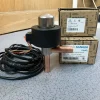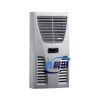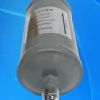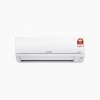What is a non-inverter air cond?
A non-inverter air conditioner is a traditional type of air cond that operates at a fixed speed. When it’s turned on, it runs at full capacity and only cycles on and off to maintain the temperature. Start/stop compressors frequently will consume more energy.
Pros and Cons
- Lower initial cost. Air cond units are less expensive compared with inverter air cond
- Simplicity and durability. Simple design, fewer components compared with inverter air cond, lesser chance for technical issues.
- Easier to repair. Less complex, easier and cheaper to repair.
- Higher energy consumption over time. Continuously cycle on and off increases electricity consumption.
- Less temperature control. The compressor will run at 100% full load or 0% stop when reach temperature set point. Caused less consistent cooling.
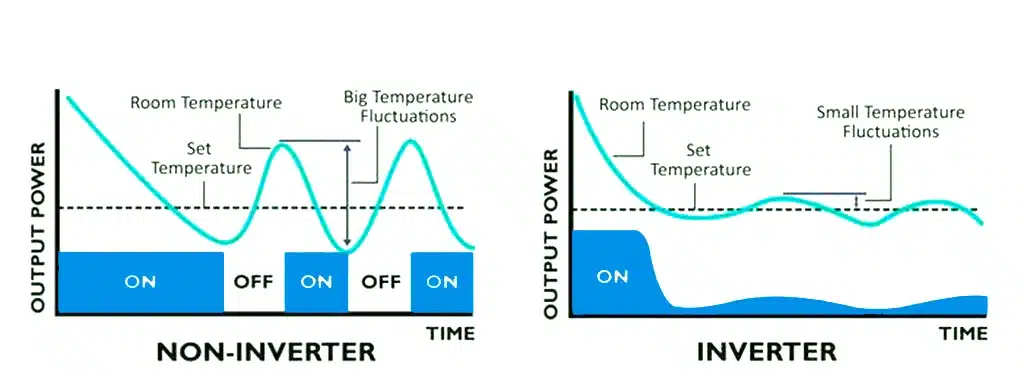
What is an inverter air cond?
An Inverter air cond adjusts its compressor speed based on the cooling demand, which makes it more energy-efficient and capable of maintaining a more stable temperature
Two types of inverter air cond: AC inverter and DC Inverter:
- AC (Alternating Current) inverter air cond use an inverter to control the speed of compressor motor to avoid start/stop cycles.
- DC (Direct Current) inverter air cond uses a similar principle but with more advanced and efficient system. DC inverter uses direct current motor which generally more efficient, quieter, smoother and faster adjustment in compressor speed. DC motors consume less power and generate less heat than AC motors
Pros and cons
- Higher cost. Inverter air cond are more expensive in terms of air cond unit and repair cost
- Complex repair. Because of the advanced technology, repairs inverter air cond can be complicated and lead to high cost repairing and spare parts.
- Sensitivity to power surges. Sensitive to voltage fluctuations and power surges. If having unstable electricity can cause malfunction or shorten the lifespan
- Lower noise level. Compressor doesn’t constantly start and stop, system run smoother.
- Consistent Temperature. Mor
